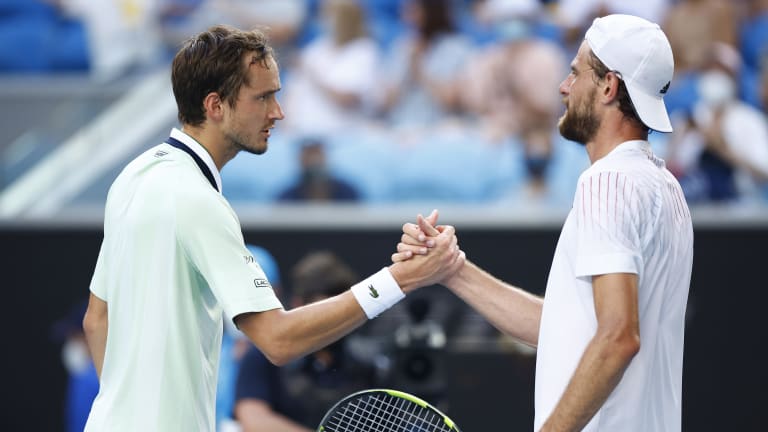Australian Open
"Working on myself": Daniil Medvedev adjusts to Cressy's style to avoid letting out his crazier side
By Jan 24, 2022Australian Open
Mirra Andreeva dons “I would like to thank myself” sweatshirt after Adelaide title
By Jan 17, 2026Australian Open
Novak Djokovic hopes to face Carlos Alcaraz, Jannik Sinner at 2026 Australian Open
By Jan 17, 2026Australian Open
Daria Kasatkina is “giving ‘no worries’ a crack” in first Australian Open as Aussie citizen
By Jan 17, 2026Australian Open
Jessica Pegula aims to expand “Player’s Box podcast,” talks Aryna Sabalenka rivalry at AO
By Jan 17, 2026Australian Open
Venus Williams talks Palm Beach wedding to Andrea Preti before Australian Open return
By Jan 17, 2026Australian Open
Back to Blonde: Amanda Anisimova heads to Australian Open high on confidence
By Jan 17, 2026Australian Open
“It’s not a joke”: Iga Swiatek shuts down reporter for spoiling Australian Open draw
By Jan 16, 2026Australian Open
Coco Gauff is Team Ilya Rozanov after "Heated Rivalry" binge at Australian Open
By Jan 16, 2026Australian Open
No, Madison Keys won’t take sides on the latest season of Real Housewives of Salt Lake City
By Jan 16, 2026"Working on myself": Daniil Medvedev adjusts to Cressy's style to avoid letting out his crazier side
At one point, the world No. 2 declared "this is so boring" after missing a slew of break points in the pair's fourth-round match at the Australian Open Monday.
Published Jan 24, 2022
Advertising
Advertising

The No. 2 seed advances to face Felix Auger-Aliassime in a rematch of the 2021 US Open semifinals. Medvedev claimed that in straight sets and also recently snagged a 6-4, 6-0 win in the ATP Cup.
© Daniel Pockett
Advertising

Medvedev found 60 winners, while producing just 11 unforced errors; Cressy came forward 135 times, winning 89 points (66% success rate).
© Daniel Pockett